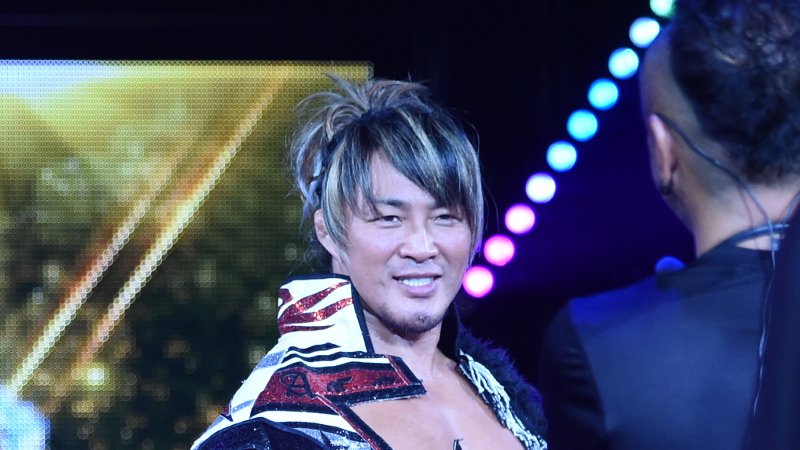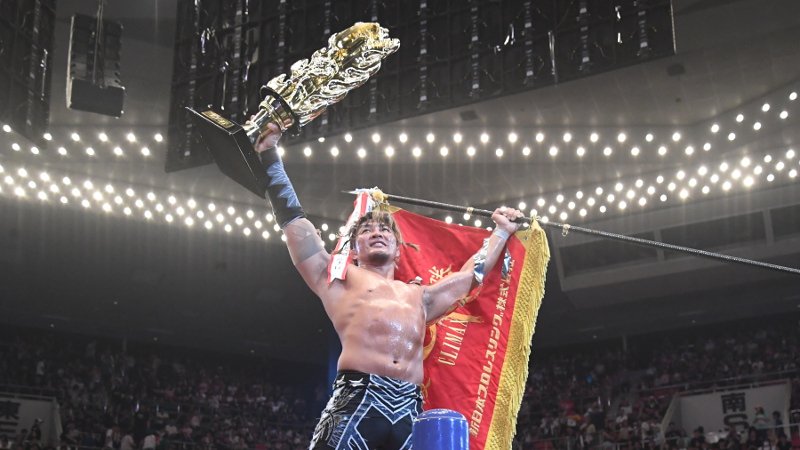
Modern day New Japan Pro Wrestling sees the Japanese promotion stand firmly at #2 in the world. In Japan, they’re the undisputed #1 promotion, but not too many people know of the dark age that NJPW was in during the late 1990s/early to mid-2000s. Just for context, we’re going to go all the way back to 1972.
Rikidozan, the most legendary figure in Japanese wrestling history (and interestingly enough, a Korean by birth) had two major students – Antonio Inoki and Shohei “Giant” Baba. In 1972, his two main students parted ways and opened their own promotions, with Inoki opening New Japan Pro Wrestling and Baba opening All Japan Pro Wrestling.
For over two decades, NJPW had seen its struggles but still succeeded as a whole, building some major stars. During the 1990s, NJPW was centered around three main stars known as “The Three Musketeers” – Keiji Mutoh, Masahiro Chono and Shinya Hashimoto.
NJPW reached new heights with these three in the forefront and one of the major aspects where Inoki saw money in was invasion angles. There were a whole bunch of invasion angles during the 90s – those that saw peak interest drew large crowds and made a lot of money. But as with every great idea, it’s only a matter of time before it’s oversaturated, or the well runs dry.
It must be remembered that this was during the peak of the Monday Night Wars, which saw WWF and WCW go to a ratings war. Also around the same period of time, MMA began to see a big rise, with PRIDE Fighting Championship in the forefront. Due to his bizarre shoot-fight with Mohammad Ali in Japan, Inoki viewed MMA as direct competition.
He knew that he needed change. He was right in thinking so, but the execution of the change drove the company haywire and into lows that it had never seen before. In the first instance, Inoki put Hashimoto up against shoot fighter Naoya Ogawa. During their Tokyo Dome main event, Ogawa started shooting on Hashimoto, essentially toying around with him and proving that the NJPW ace couldn’t even lace his boots. Not only was it a humiliation for Hashimoto, but he would then get into an argument with Inoki and call it quits with the company.
Keiji Mutoh would follow suit in 2002 and leave the company, defecting to All Japan Pro Wrestling. It should be noted that at the time, AJPW’s roster defected with Mitsuharu Misawa to NOAH and Mutoh became the AJPW President, helping to rebuild the company. However, NJPW was not in a good place at the time. Inoki increasingly felt that fans wanted to see shoot fights and that kayfabe was being broken sooner than later.
As a result, he started making his top stars compete against high-level MMA fighters and kickboxers. Names like Yuji Nagata and Yoshihiro Takayama were being humiliated by MMA fighters and it affected them too. Moreover, Inoki’s love for MMA made him bring over fighters into pro wrestling. Naturally, as pro wrestlers weren’t very good at fighting, fighters weren’t very good at pro wrestling. That saw a massive dip in the product, exemplified by the fact that Bob Sapp became IWGP Heavyweight Champion (and was stripped of it because he lost his K-1 Fight).
It was very late on that Inoki realized that he needed to push younger superstars. He got behind a young rookie named Shinsuke Nakamura, who was a rare example of a pro wrestler who won three of his five MMA fights (with one being a no contest). Nakamura was pushed as a “super rookie”, winning the IWGP Heavyweight Championship at the record age of 23. He even main evented the Tokyo Dome in 2004 against Takayama – a title unification match which he won.
But there was one major problem – Nakamura simply wasn’t ready yet. This wasn’t the King of Strong Style Shinsuke Nakamura. This was a relatively bland, non-charismatic rookie who looked as generic as one could get. On big occasions, he simply didn’t deliver. It would be years before he went on his excursion and returned as the Nakamura fans got to know, love and accept as a pillar of NJPW.
When Brock Lesnar jumped ship to NJPW, things only got more chaotic. He won the IWGP Heavyweight Championship right off the bat in his debut match in 2005. He even beat Nakamura to retain the title at the Tokyo Dome. Nakamura later stated that it was the only time he ever cried after losing a wrestling match.
While Lesnar was originally scheduled to drop the title to Nakamura, NJPW wasn’t able to pay him, so he sat at home and refused to drop the title, all while NJPW stripped him. Lesnar did, however, wrestle for Inoki’s other promotion known as Inoki Genome Federation (IGF) – a quasi-MMA promotion.
Here, Brock Lesnar would be recognized as IWGP Heavyweight Champion and he dropped the title to Kurt Angle. At long last, Nakamura and Kurt Angle faced off, with Nakamura finally being able to unify the titles. But that just goes to show the chaotic state that NJPW was in.
Around the mid-2000s, Inoki had finally sold the company to Yuke’s, which would be a turning point in itself. Gedo was given reins over the creative team, previously handled by Riki Choshu. This was when the real recovery began, especially from a creative point of view. All the years of chaos and disarray drove many fans away. But NJPW then started focusing on pushing a young star named Hiroshi Tanahashi.
Around 2006, Nakamura went for his excursion, one that would change his career forever. Tanahashi, meanwhile, became the ace of NJPW and was instrumental and getting back the lost audience. From the dark ages, NJPW had finally found their stride again, with Tanahashi in the forefront.
Slowly but surely, Tanahashi would bring NJPW back to its former glory, being front and center in a direction that fans wanted to see. NJPW finally started listening to the fans again and they survived the worst period in their history. In 2016, Kazuchika Okada cemented himself as the ace of NJPW.
While he has undoubtedly been a central figure in the International expansion and taking the company to new heights, it was Tanahashi and Gedo who were instrumental in getting out of the dark ages. They would show their resiliency, taking back the top spot in Japan.





